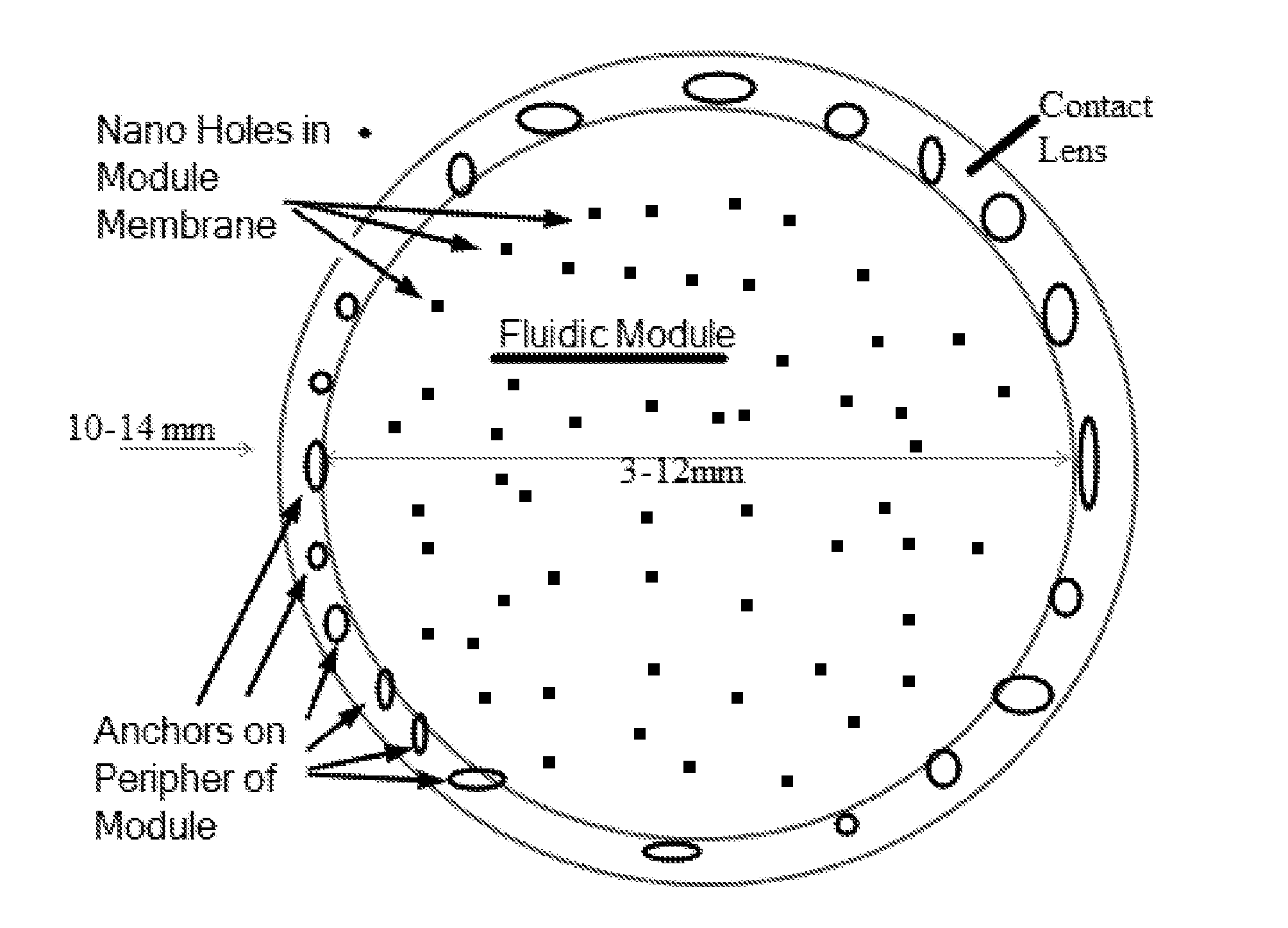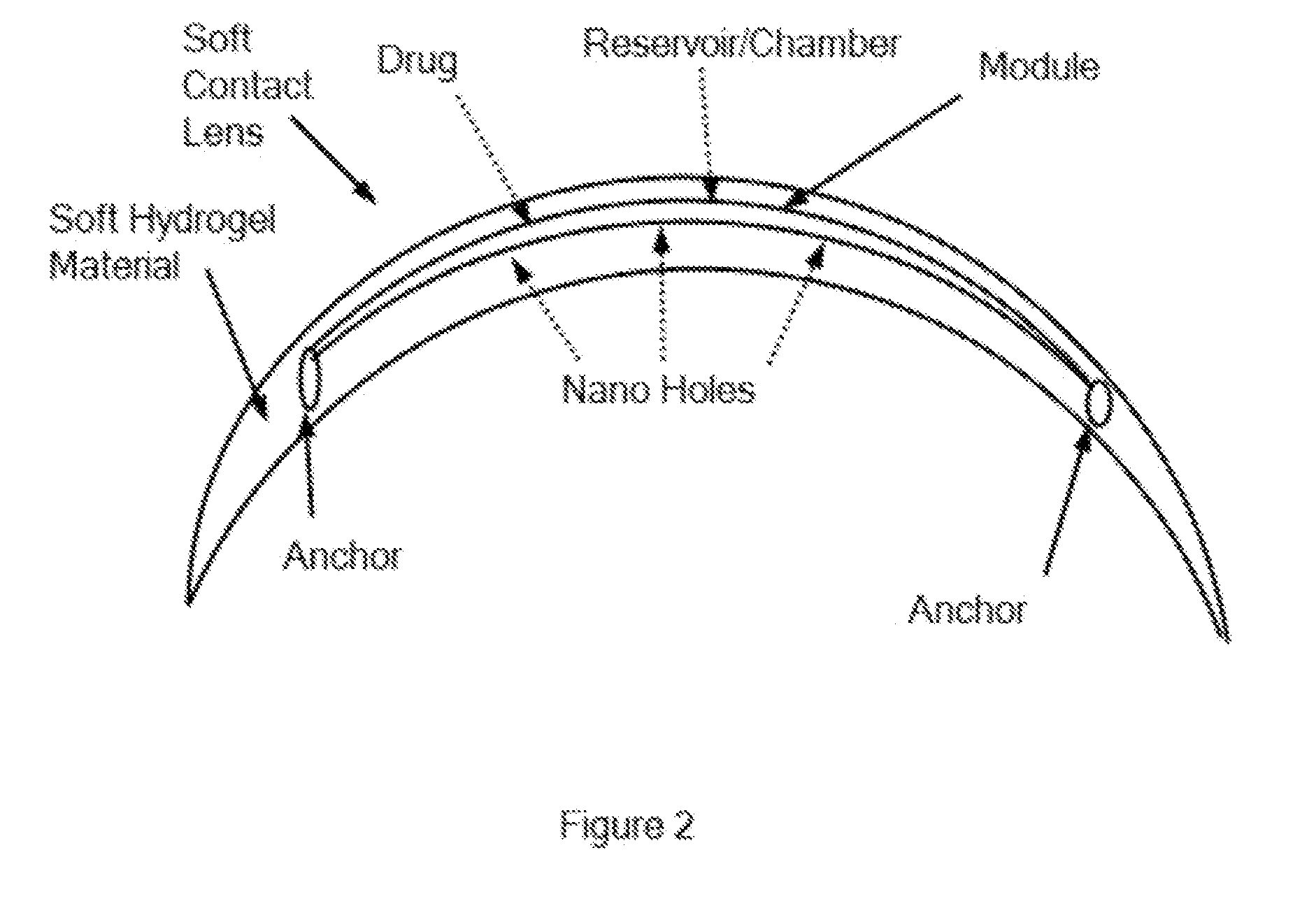Drug delivery from contact lenses with a fluidic module
a technology of fluidic module and contact lens, which is applied in the direction of drug compositions, instruments, immunologic disorders, etc., can solve the problems of less than ideal release mechanism of prior devices, less than ideal drug release profiles, and less than ideal prior method and apparatus of delivery of therapeutic agents
- Summary
- Abstract
- Description
- Claims
- Application Information
AI Technical Summary
Benefits of technology
Problems solved by technology
Method used
Image
Examples
Embodiment Construction
[0049]The embodiments disclosed herein are well suited for combination with many prior contact lenses and therapeutic agents.
[0050]FIG. 1 shows a top view of the fluidic module, comprising an optically centered chamber, and FIG. 2 shows a side view of the contact lens as in FIG. 1, comprising the fluidic module embedded in a soft contact lens, in accordance with embodiments.
[0051]In many embodiments, a soft hydrogel contact lens comprises a reservoir module embedded inside the contact lens to release a therapeutic agent such as drug. The therapeutic agent may comprise lipid to inhibit evaporation of the tear film, in order to treat dry eye, for example. The soft hydrogel material may comprise a silicone hydrogel material that readily releases the therapeutic agent to the eye, for example to the tear film, when release from the module. The reservoir module comprises a wall to contain and inhibit release of the drug, and holes sized to release the drug. The holes can be sized large, e...
PUM
| Property | Measurement | Unit |
|---|---|---|
| diameter | aaaaa | aaaaa |
| diameter | aaaaa | aaaaa |
| compressive force | aaaaa | aaaaa |
Abstract
Description
Claims
Application Information
 Login to View More
Login to View More - R&D
- Intellectual Property
- Life Sciences
- Materials
- Tech Scout
- Unparalleled Data Quality
- Higher Quality Content
- 60% Fewer Hallucinations
Browse by: Latest US Patents, China's latest patents, Technical Efficacy Thesaurus, Application Domain, Technology Topic, Popular Technical Reports.
© 2025 PatSnap. All rights reserved.Legal|Privacy policy|Modern Slavery Act Transparency Statement|Sitemap|About US| Contact US: help@patsnap.com



